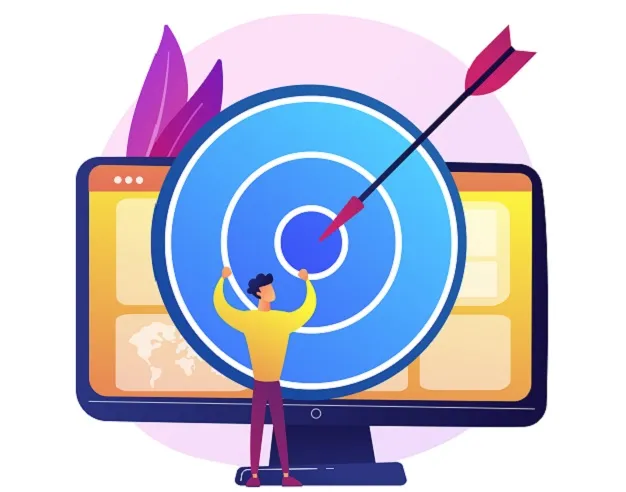
Menu

Menu

Of all the interactions between managers and employees, giving and receiving feedback is, without a doubt, the one that has the most significant impact on the individuals concerned—whether that impact is positive or negative. Moreover, effective feedback can foster personal and professional growth, while constructive criticism can lead to improvements in performance. Additionally, regular feedback helps to build trust and open communication between managers and employees, creating a supportive work environment. As a result, the feedback process becomes a crucial element in enhancing employee engagement and overall organizational success.
Formal feedback often happens only during the annual performance review, which limits growth opportunities. Many of us have sat through reviews where we received feedback for the first time, usually without context and presented in a less-than-productive manner.
As a result, such interactions can be detrimental; everyone leaves the meeting feeling demotivated, demoralized, and disengaged. In contrast, regular and constructive feedback can significantly boost employee morale and performance. It fosters a culture of continuous improvement and open communication. Ultimately, making feedback an ongoing conversation—rather than a yearly event—can lead to a more engaged and motivated workforce.
Moreover, the rise in remote working has created even more challenges for giving and receiving feedback, as well as for performance management. Specifically, the lack of face-to-face interactions can hinder effective communication, making it difficult for managers to provide timely and constructive feedback. Additionally, employees may feel isolated and disconnected, which can exacerbate feelings of uncertainty regarding their performance. As a result, organizations must adapt their feedback and performance management strategies to accommodate remote work environments. By leveraging technology and fostering open lines of communication, organizations can ensure that feedback remains a vital part of employee development, even in a remote setting.
Here are five ways you can turn these “moments of truth” into productive and positive two-way conversations.
The worst time to give and receive feedback is, without a doubt, when you are agitated, tired, or upset—in other words, when you are unable to focus on the conversation. Moreover, for any communication to be positive and effective, you need to ensure that you are calm and have thoughtfully considered what you are trying to achieve. Additionally, taking the time to reflect on your message can help you articulate your thoughts clearly and constructively. Consequently, this approach not only enhances the quality of the feedback but also fosters a more receptive environment for the recipient. Ultimately, prioritizing the right timing and mindset for feedback can significantly improve its impact and effectiveness.

It is also important to remember that, generally speaking, criticism should always be given in private to avoid embarrassing the individual. Conversely, praise is often most effective when delivered in public, as it can boost morale and encourage others. Additionally, recognizing achievements in front of peers not only reinforces positive behavior but also fosters a culture of appreciation within the team. Ultimately, understanding the appropriate context for delivering feedback—whether positive or negative—can enhance its effectiveness and strengthen workplace relationship.
Feedback also needs to be timely; otherwise, it loses its impact. Whether positive or negative, delays in giving feedback can result in messages that are not only meaningless but can also be detrimental to the recipient’s development. For instance, late praise can seem insincere, leading the individual to question the genuineness of the acknowledgment. Similarly, late criticism can come across as merely mean-spirited, which can undermine trust and morale. Therefore, providing feedback in a timely manner is essential for ensuring that it is both relevant and constructive, ultimately fostering a more supportive and effective communication environment.
There are many disadvantages when feedback is a once-a-year event. The most obvious is that the feedback is so far away from actual events that it is difficult for both parties to recall events and talk through any issues in a meaningful way.
The tension created by waiting for feedback and not knowing the focus of discussion for the meeting adds pressure for both parties that can colour the effectiveness of the two way conversation.
And for some people, the lack of feedback during the year will have created complacency around the whole process.

Whichever of the above may apply, the bottom line is that the feedback is unproductive and demotivating.
A far more effective way for you to provide feedback is to treat it as a regular activity and to look for opportunities to reinforce positive behaviours or to stop anything detrimental before it gets out of hand. When feedback becomes an informal part of everyday work, it ensures that everyone knows where they stand and that there will be no surprises at any subsequent formal review meeting.
Giving prompt feedback is also something that gets easier with practice so that even potentially difficult conversations become more comfortable and are better accepted.
Feedback should always be thoughtful. To be able to communicate clearly and stay focused on the issues at hand, some level of preparation is needed.
Preparation doesn’t mean time spent rehearsing the two way conversation, but you should be sure of what you want to say and what outcome you are looking to achieve. It is also useful to try and anticipate how the other person might react so that you can be prepared to respond appropriately.

You should always be able to give context for any issues you raise and provide clear and concise factual examples. Essential to anyone being able to internalise feedback is the need for them to be able to relate it to an event that has occurred. Concrete cases to illustrate the issue help to ensure that the two way conversation is seen as fair, and opens the opportunity for discussion around what has happened.
Make sure that you have first-hand knowledge of any examples you use and do not depend on hearsay or rumours. Feedback must be authentic to influence performance positively.
The aim of providing feedback is to be constructive and helpful, conveying a clear message about which behaviors or activities to continue and what needs to change. Therefore, a feedback session should focus on only one or two issues at a time, concentrating solely on actions or activities that the recipient can change. Presenting too many issues all at once can feel like an attack, overwhelming the recipient. Consequently, this approach highlights yet another reason why the “once-a-year” feedback method often fails to be effective.

Avoid using words or body language that suggest blame or become too personal, and try not to use words that exaggerate the issue, such as “always” or “never”, as this takes the focus off the particular event being discussed and suggests that the situation is unsolvable.
Use a communication style that focuses on the impact of the behaviour so that the recipient can see the situation from someone else’s perspective. It is unlikely that every point will be agreed upon by both parties, and it is essential to listen to each other and encourage a two-way discussion.
An open and respectful conversation where both parties share ideas on ways to improve performance is much more likely to get buy-in and lead to follow-through on agreed action points.
Always record the conversation and the agreed action steps for future reference and as a base for monitoring future performance improvement.
Organisations can make the evaluation process more objective, transparent, and credible, while managing feedback more constructively, by using technology to simplify the process.

Having goals and performance targets online creates transparency and enables employees to be active participants in ensuring that they meet their objectives as well as in discussions on their performance.
Other benefits include:
♦ cascading and alignment of goals in the organisation
♦ searchable records
♦ standardisation of processes
♦ facilitated communication between employees and managers
♦ holistic reporting on performance and trends across the organisation
If you implement these five tips you can turn unproductive one-way annual feedback into productive and positive two-way conversations that benefit the employee, the manager, and the organisation as a whole.
Alignment
Article
Audit
Automation
Benefits
Candidate
Communication
Compliance
Digitalisation
Digital Technology
Diversity
Emirates Id Application
Employee Experience
ESS
Feedback
Health and Safety
HRMS
HR Strategy
HR System UAE
Human Resource Management
Human Resource Management Systems
Job Roles
Learning and Development
Onboarding
Outsource
Payroll
Payroll Management System
Payroll Processing
Performance
Performance Management
Personalisation
Recruit
Recruiting
Recruitment
Remote Working
Rewards
Security
Service Providers
Skills
Smart
Survey
Virtual
Visa Cancellation
Work Environment
Workforce
© 2025 Pruvity HR Solutions Pvt Ltd, Madurai, India